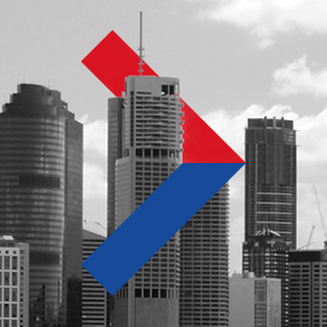Make voluntary contributions to your super.
Suggested Search
Saving a deposit to buy your first home isn’t easy. That’s why the government introduced the First Home Super Saver Scheme (FHSSS) to help Australians use the tax benefits of super to save a deposit faster.
Essentially, you make extra contributions to your super and allow your money to grow. When you’re ready, you can withdraw this money, including the associated earnings, to put towards a deposit on your first home.
According to the ATO, more than $415 million has been saved and accessed using the FHSSS since it was introduced in 2018.
On this page
- What’s the eligibility criteria for the FHSSS?
- How to save a first home deposit with FHSSS
- What are eligible and ineligible contributions?
- How to apply for release of your FHSSS to buy a house
- How to apply for FHSSS financial hardship
- Contribution caps still apply
- What are the tax considerations of FHSSS?
- Case study: Saving a home deposit using the FHSSS
- Getting started
What’s the eligibility criteria for the FHSSS?
- You must be 18 or older when making a FHSSS release request.
- You can’t have previously owned property in Australia (unless you lost this property due to financial hardship).
- The money must be used to either buy or construct a residential dwelling. You can’t use the FHSSS to buy a motor home or houseboat.
- If you withdraw the money from your super before entering a contract to buy or construct a home, you must buy or enter a contract to build a home within 12 months.
- Whether you buy an existing property or construct a new property, you must live in it for at least six months within the first year that it’s capable of being occupied.
- You can’t withdraw any super contributions you made before 1 July 2017.
- You have not previously made a FHSSS release request.
How to save a first home deposit with FHSSS
Of course, there are many different ways to save a first home deposit. The benefit of doing it within your super is that you may end up paying less tax, which means you can save a deposit faster.
You can actually save on tax in two ways.
Firstly, you only pay of up to 15% tax on whatever earnings your super contributions make. Outside of super, in another type of investment account, you would have to pay your marginal tax rate on those earnings.
Secondly, if you make before-tax super contributions (such as salary sacrifice contributions), you’ll only have to pay 15% on those contributions as well – and you’ll reduce your taxable income by the total amount of your contributions.
The higher your marginal tax rate, the more you can potentially save.
You can take as long as you want to save a first home deposit with the FHSSS. When you’re ready, you can withdraw up to $15,000 of the contributions you made each financial year with a maximum total withdrawal amount of $50,000 plus associated earnings.
If you’re buying a home with your partner, they can use the FHSSS as well. That means you could potentially withdraw up to $100,000 plus associated earnings to put towards your first home.
What are eligible and ineligible contributions?
• Salary sacrifice contributions (arranged through your employer and paid from your before-tax income)
• Personal contributions that you claim a tax deduction for
• Personal contributions that you don’t claim a tax deduction for
• Super guarantee contributions (the ones your employer makes for you)
• Spouse contributions that your partner pays into your super account
How to apply for release of your FHSSS to buy a house
-
Step 1
-
Step 2
When you think you have enough money saved, apply to the ATO for what’s known as a FHSSS determination. You can do this through your myGov account. If your application is approved, the ATO will let you know your maximum FHSSS release amount.
-
Step 3
Send a withdrawal request to the ATO by submitting a release form through myGov. The ATO will assess the form and get in touch with your super fund to let them know about the withdrawal. Once the super fund pays the amount to the ATO, the ATO will withhold a certain amount of tax and pay the rest into your bank account. This is usually done within 15-20 business days.
-
Step 4
Put the money towards your home deposit. You have 12 months to buy a property or enter a contract to build a home from the date you request a FHSSS release. You only have to sign the contract within those 12 months – you don’t have to be in the property already. However, the ATO may grant you an extension for another 12 months if you can’t find what you’re looking for.
-
Step 5
Within 28 days of signing the property contract, use myGov to let the ATO know you’ve bought a property. If you skip this step, you may have to pay additional tax.
How to apply for FHSSS financial hardship
While the FHSSS is intended for first home buyers, there’s an exception for people who have experienced financial hardship that resulted in them losing a property they owned.
This might be due to:
- bankruptcy
- divorce
- separation from a de-facto partner
- a relationship breakdown
- loss of employment
- illness
- a natural disaster.
The best way to find out if you’re eligible for the FHSSS financial hardship provision is to contact the ATO directly. You’ll have to provide evidence as part of your FHSSS application that shows how the hardship event resulted in you losing your property.
Contribution caps still apply
Regardless of whether the additional super contributions you’re making for your home deposit come from your before-tax income (concessional contributions) or after-tax income (non-concessional contributions), the contribution caps still apply.
The total amount of concessional contributions you can make in a year is $27,500. For non-concessional contributions, it’s 110,000 per year. However, there are some instances where you may be able to make contributions above this amount.
Making larger concessional or non-concessional contributions
What are the tax considerations of FHSSS?
When you withdraw money that you made as a concessional contribution (e.g. salary sacrifice contributions), the ATO will deduct tax from the amount they pay to you. This is because these contributions were made from your before-tax income, so you haven’t paid income tax on that amount. However, it won’t be as high as your marginal tax rate. The money (including any associated earnings) will be taxed at your marginal tax rate including the Medicare levy, but with a 30% tax offset.
When you withdraw money that you made as a non-concessional contribution (e.g. a personal contribution that you didn’t claim a tax deduction for), the ATO won’t deduct any tax from the amount they pay to you. This is because you already paid tax on that money.
Case study: Saving a home deposit using the FHSSS
Brooke and Daniel save a deposit of $110,346 using the FHSSS
Brooke and Daniel are saving up to buy their first home. Brooke earns $85,000 per year and Daniel earns $78,000. They both decide to contribute an additional $15,000 to super each year from their before-tax income using a salary sacrifice arrangement with their employers. These contributions will be subject to 15% super contributions tax, which means the net amount of their annual contributions will be $12,750.
After four years, and assuming an earnings rate of 6.90% p.a.,* Brooke and Daniel will have each saved an additional $58,726 that they can apply to withdraw using the FHSSS.
The ATO deducts tax from these contributions and earnings at their marginal tax rates, but with a 30% tax offset. This gives Brooke and Daniel a net withdrawal amount of $55,016 and $55,331 respectively, meaning they have a combined amount of $110,346 that they can put towards their first home deposit.
*The ATO uses a deemed interest rate (the ‘shortfall interest charge’ rate) to calculate daily compounded earnings that can be released under the FHSS scheme. This rate is 6.90% p.a. for the July to September quarter of the 2023–24 financial year. This case study assumes contributions are made half way through each year for earnings calculation purposes.
Getting started
Additional rules may apply, so do your research before making any decisions. The FHSSS page on the ATO website has all the details you’ll need.
You may also want to check your state or territory’s First Home Owner Grant information to see what else you may be eligible for.
What’s next?

What is superannuation?
How does super work? What are the different types? Find out in our complete guide to superannuation.


How much super do I need?
Discover how much super you need to enjoy the retirement you want, and what you can do to get there.
Unleash in ways you never thought possible
Get in touch
Get in touch with us online or call us
8:30am to 6pm AEST Monday to Friday.
Find a financial adviser
Use our tool to find professional financial advice,
local to you.
Download mobile app
Track your balance and see your
transactions history from anywhere.
Information on this webpage is provided by Avanteos Investments Limited ABN 20 096 259 979, AFSL 245531 (AIL). It may include general advice but does not consider your individual objectives, financial situation, needs or tax circumstances. You can find the target market determinations (TMD) for our financial products at www.cfs.com.au/tmd, which include a description of who a financial product might suit. You should read the Financial Services Guide (FSG) available online for information about our services.
Tax considerations are general and based on present tax laws and may be subject to change. You should seek independent, professional tax advice before making any decision based on this information.
AIL is not a registered tax (financial) adviser under the Tax Agent Services Act 2009 and you should seek tax advice from a registered tax agent or a registered tax (financial) adviser if you intend to rely on this information to satisfy the liabilities or obligations or claim entitlements that arise under a tax law.


